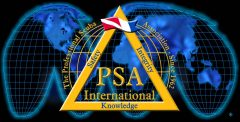The PSAI Altitude Diving courseis designed to train divers to properly conduct a dive for a site which lays above sea-level including all areas of pre-planning, in-water, and post dive procedures necessitated for an altitude dive.
COURSE CONTENT INCLUDES:
- The History of Altitude Diving.
- Equipment Considerations for Altitude Diving.
- Physiological Considerations for Altitude Diving.
- Using the U.S. Navy Tables and the Theoretical Ocean Depth.
- The Bühlmann Air Dive Tables.
- Nitrox Methodologies for Altitude Dive.
The PSAI Altitude Diving Program has been developed to provide divers with the theory and practical skills in order to have the required knowledge and skills necessary for the proper use of air and Nitrox at dive sites which are found at an altitude above sea level, for which standard dive procedures are not completely applicable or adequate. This course is not intended to be a substitute for Nitrox, Advanced Nitrox, or Extended Range Nitrox training. The PSAI Altitude Diving Program serves to augment what divers have already learned in such courses and is geared for the application of their content as it applies to diving at altitudes above sea level.
Divers throughout the world are venturing to dive sites which above the sea level margins, Open Water Courses primarily train divers to handle dives from sea level to within 300 meters (1,000 feet) of altitude above sea level. The “standard dive tables” which most divers use as well as many procedures which relate to dive tables and dive planning are limited to this narrow range. In order to dive above 300 meters the need for proper training becomes critical. There are many virgin sites just waiting for the PSAI Altitude Diver. These dive sites include: mountain lakes, karst features in many continental upper plateau regions, interesting sinks, springs, and streams in high desert regions, volcanic lakes. It is the goal of the PSAI Altitude Diving Program to provide divers seeking to enjoy these interesting sites with the proper tools and skills to handle altitude diving in the safest possible manner.
There can be little doubt when one looks at the 180 page PSAI Altitude Diving Manual, just how comprehensive this course is. One would expect this, as PSAI Executive Chairman, Gary Taylor and author of the PSAI Altitude Diving Manual, pioneered many innovations for the use of mixed gas at altitude such as the Theoretical Ocean Air Depth (TOAD) Methodology, the Nitrox to Sea-Level Air Equivalency Method, the Air at Sea-level Altitude Equivalency Chart for the use of Nitrox at altitude, as well as many other innovations.
